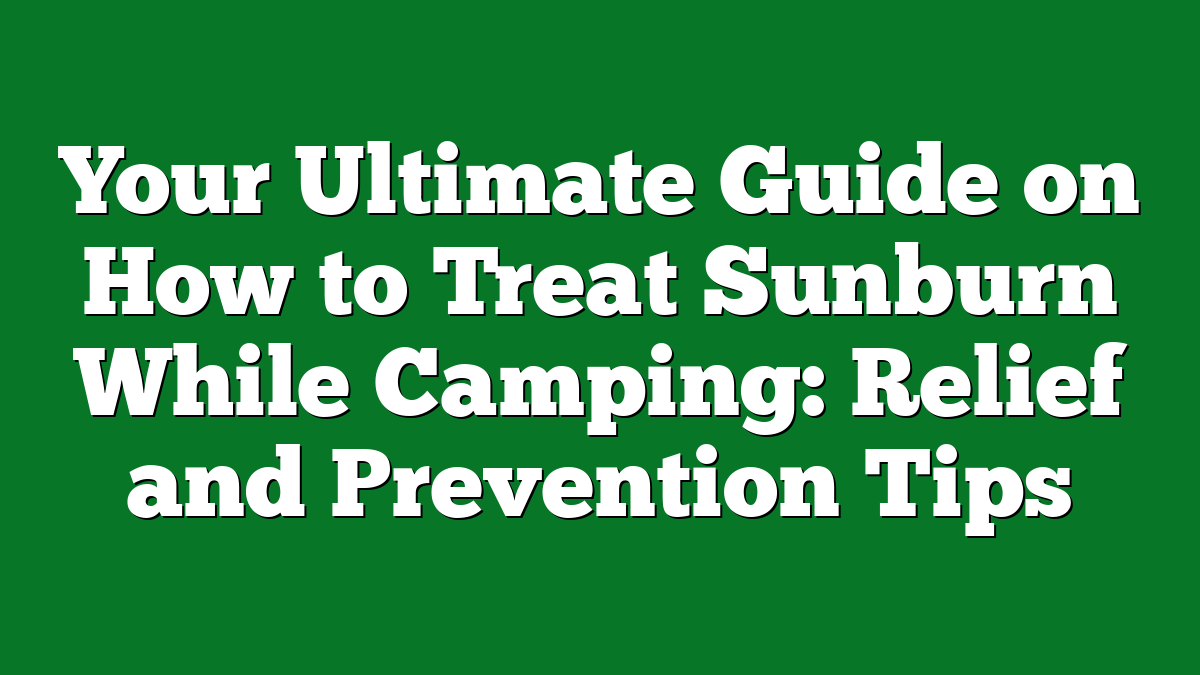Planning a camping trip for veterans can be a rewarding experience that fosters camaraderie and relaxation. Whether it’s a weekend getaway or an extended adventure, the great outdoors offers a perfect backdrop for reconnecting with nature and each other. I’ve found that a well-thought-out plan makes all the difference in creating a memorable experience.
From choosing the right location to ensuring accessibility, there are several factors to consider. It’s all about tailoring the trip to meet the unique needs of veterans, making sure everyone feels comfortable and included. With a little preparation and the right mindset, you can create an unforgettable camping experience that honors their service while celebrating the joys of nature.
Understanding Veterans’ Needs
Planning a camping trip for veterans involves understanding their unique requirements. Fostering an environment that prioritizes their physical and emotional well-being can create a truly enriching experience.
Physical Considerations
Physical accessibility stands as a primary concern. Choose campsites with flat terrain, nearby amenities, and access for mobility devices. Make sure to consider any specific health needs veterans may have. Bring along necessary medical supplies, like medications and first aid kits. Pack lightweight gear to reduce strain, such as portable chairs and easy-to-carry tents. Encourage veterans to share any personal physical limitations so I can help plan appropriate activities that suit their abilities.
Emotional Well-Being
Emotional well-being deserves equal attention. Create a supportive atmosphere that allows veterans to connect and share their experiences. Plan group activities like campfire storytelling or guided nature walks to promote camaraderie. Respect each individual’s pace and comfort levels, ensuring a safe space for personal reflection. Incorporate mindfulness practices, such as meditation or quiet time in nature, to help veterans unwind and relax. Keep lines of communication open, allowing veterans to express concerns or preferences throughout the trip.
Choosing the Right Location
Selecting the right camping location shapes the overall experience. I focus on accessibility and natural features to ensure a comfortable and enjoyable trip for veterans.
Accessibility for Veterans
I prioritize campsites that cater to various accessibility needs. Look for locations with flat terrain, paved pathways, and nearby restrooms that accommodate individuals with mobility challenges. Facilities should include ramps or accessible parking, ensuring everyone can participate stress-free. It’s essential to confirm the availability of medical services nearby in case of emergencies. Many state and national parks offer designated accessible sites, so I always check for these options before finalizing my plans.
Natural Features to Consider
I choose locations with natural beauty and features that can enhance the camping experience. Consider sites near lakes, rivers, or scenic trails; each of these allows for diverse outdoor activities like fishing or hiking. Look for well-maintained forests offering shade during warmer months and protection from wind. Scenic overlooks and unique geological formations can also create a soothing atmosphere for relaxation and reflection. Access to fire pits and picnic tables encourages group meals and bonding, reinforcing that sense of community I cherish in my trips.
Essential Gear and Supplies
Planning a camping trip requires the right gear and supplies to ensure a safe and enjoyable experience. I find that being well-prepared makes all the difference, especially when catering to the diverse needs of veterans. Here’s what I recommend.
Recommended Camping Equipment
- Tent: Choose a weather-resistant tent that accommodates everyone. I prefer tents with ample headroom and enough space for gear.
- Sleeping Bag: Opt for a sleeping bag rated for the season’s temperatures. I usually pack one that offers extra insulation.
- Sleeping Pad: Use a sleeping pad to provide cushioning and insulation from the ground. Comfort matters, especially on longer trips.
- Cooking Gear: Pack a portable stove, pots, pans, and utensils. I often include a compact camping grill for added versatility.
- Cooler: A durable cooler keeps food fresh. I recommend checking the insulation ratings to ensure it lasts throughout the trip.
- Backpack: Select a comfortable backpack with enough volume for personal items and gear. I always ensure mine has padded straps for comfort on the trails.
- Hiking Boots: Invest in quality waterproof boots for stability and support. Good footwear makes a huge difference on varied terrains.
- Navigation Tools: Bring a map, compass, or GPS device. I find that staying oriented is crucial in the wild.
Health and Safety Essentials
- First Aid Kit: Always carry a well-stocked first aid kit. Include items like band-aids, antiseptics, and any personal medications.
- Insect Repellent: Prevent bug bites with effective insect repellent. A natural option works well for sensitive skin.
- Sunscreen: Protect your skin from sunburn with a high-SPF sunscreen. I reapply throughout the day, especially during outdoor activities.
- Water Filtration System: Stay hydrated with a reliable water filtration system. Carrying a water bottle with a built-in filter offers convenience.
- Emergency Whistle: An emergency whistle can be a lifesaver. It’s lightweight and easy to carry while hiking.
- Multi-tool or Knife: A reliable multi-tool or knife serves numerous purposes. I find it handy for cooking, repairs, and safety.
- Flashlight and Batteries: Pack a flashlight and extra batteries. A headlamp can also be beneficial for hands-free lighting at night.
- Waste Bags: Bring waste bags for cleaning up. It’s essential to maintain cleanliness and protect the environment.
By equipping yourself with these essentials, you create a more enjoyable camping experience that considers the unique needs of veterans. Each piece of gear plays a vital role in ensuring safety and comfort while surrounded by nature.
Planning Activities
Planning activities for a camping trip adds excitement and allows everyone to bond. Engaging veterans in both relaxation and recreation promotes healing and connection.
Relaxation and Recreation
Setting aside time for relaxation benefits everyone’s well-being. I enjoy incorporating activities like yoga sessions at sunrise or meditative walks through the woods. These simple practices help foster calmness and mindfulness.
For recreation, I recommend including engaging activities like fishing or kayaking. Choosing lakes or rivers not only provides ample opportunities for fishing but also lets individuals experience the serenity of the water. Hiking nearby trails facilitates exploration while appreciating nature’s beauty.
Games create joy, so consider team sports like volleyball or frisbee. These activities encourage participation and connection, making everyone feel included. Even a simple scavenger hunt can energize a group, providing a sense of adventure and promoting teamwork in a fun way.
Team-Building Exercises
Incorporating team-building exercises enhances camaraderie among participants. Shared challenges foster trust and support, essential for veterans.
I like to organize activities like a ropes course or an obstacle course. These physically engaging exercises encourage communication and teamwork. I create small teams to promote collaboration, ensuring everyone plays a role in achieving common goals.
Outdoor cooking challenges also build unity. I challenge teams to prepare meals using limited supplies. This encourages creativity, teamwork, and showcases skills while fostering a sense of achievement.
Lastly, storytelling circles deepen bonds. Sharing experiences promotes vulnerability and understanding within the group. It allows participants to reflect on their service while reinforcing support among fellow veterans.
Preparing for the Trip
Preparing for a camping trip involves careful planning and attention to detail. These steps make a significant difference in creating a smooth and enjoyable experience for veterans.
Creating an Itinerary
Creating an itinerary helps structure the trip while allowing flexibility for shared experiences. Start by establishing the trip duration, arrival, and departure times. Incorporate daily activities like hiking routes, fishing spots, or campfire gatherings. Reserve time for rest, reflection, and group activities to foster camaraderie. Using landmarks helps orient the participants, especially for those needing assistance. Finally, share the itinerary with everyone, ensuring they’re aware of planned activities and any contingencies for changes in weather or personal comfort.
Communicating with Participants
Communicating with participants fosters a sense of inclusion and addresses unique needs. Reach out before the trip to discuss preferences, limitations, and individual interests. Encourage veterans to share any specific concerns regarding accessibility or health requirements. Open lines of dialogue create a supportive environment and build anticipation for the trip. Provide updates leading up to the departure, including packing suggestions and weather forecasts. During the trip, check in regularly with participants, ensuring everyone’s comfortable and engaged; this reinforces the connection and strengthens the group bond.
Conclusion
Planning a camping trip for veterans is truly a rewarding experience. It’s all about creating a supportive environment where everyone can relax and connect with nature and each other. By focusing on their unique needs and preferences, I can help ensure that each veteran feels valued and included.
With thoughtful preparation and a spirit of camaraderie, we can create lasting memories that honor their service. Whether it’s through shared stories around the campfire or peaceful moments by a lake, these trips offer a chance for healing and connection. I can’t wait to hit the trails and create some unforgettable moments together.











